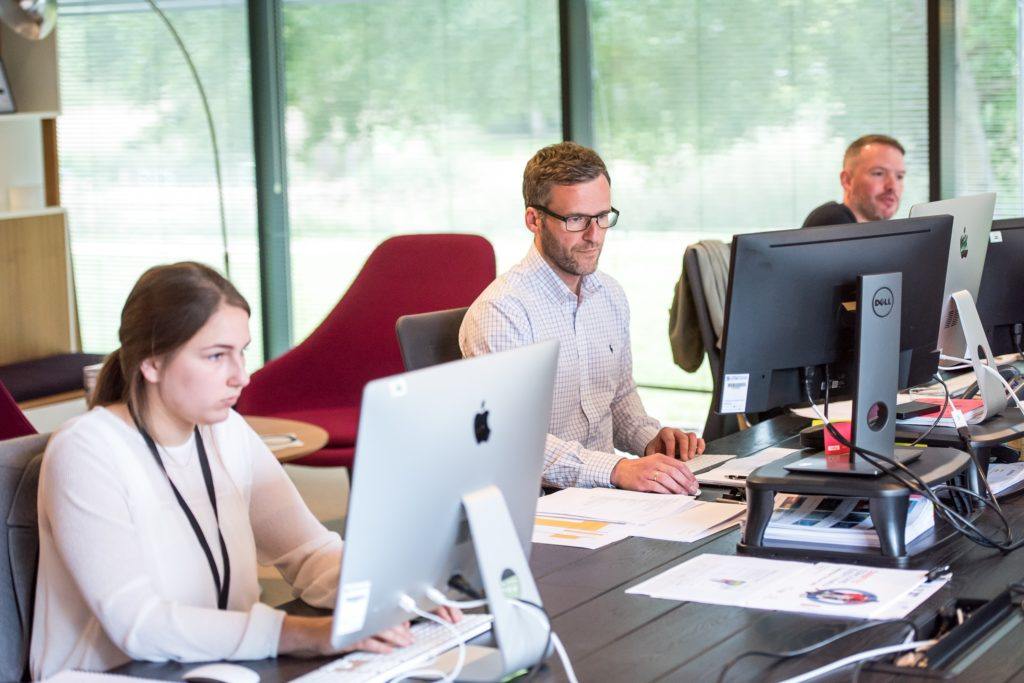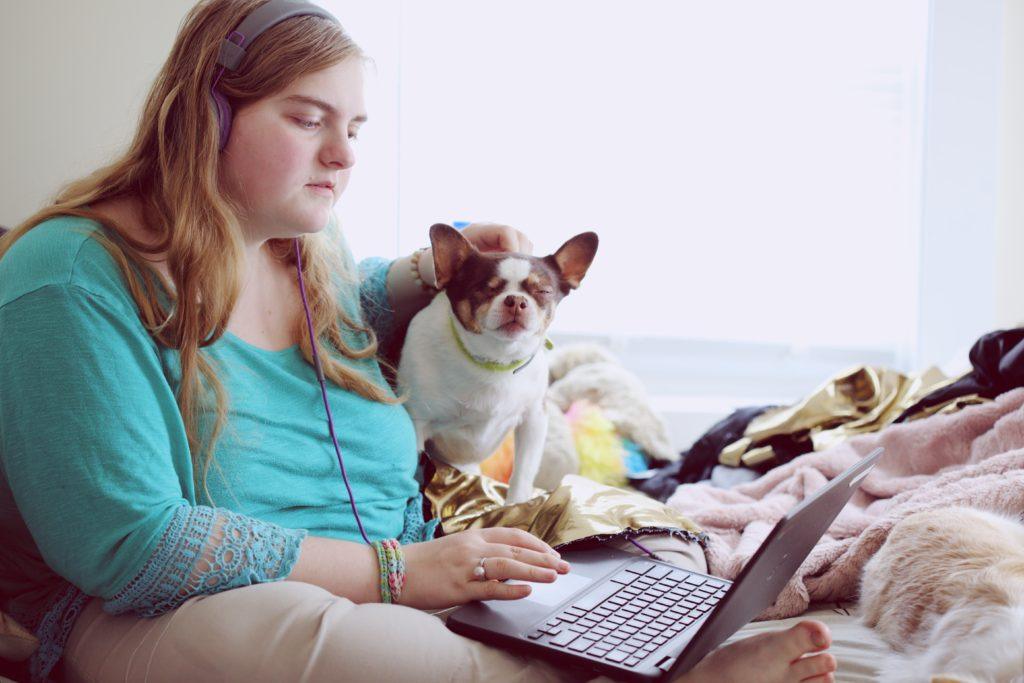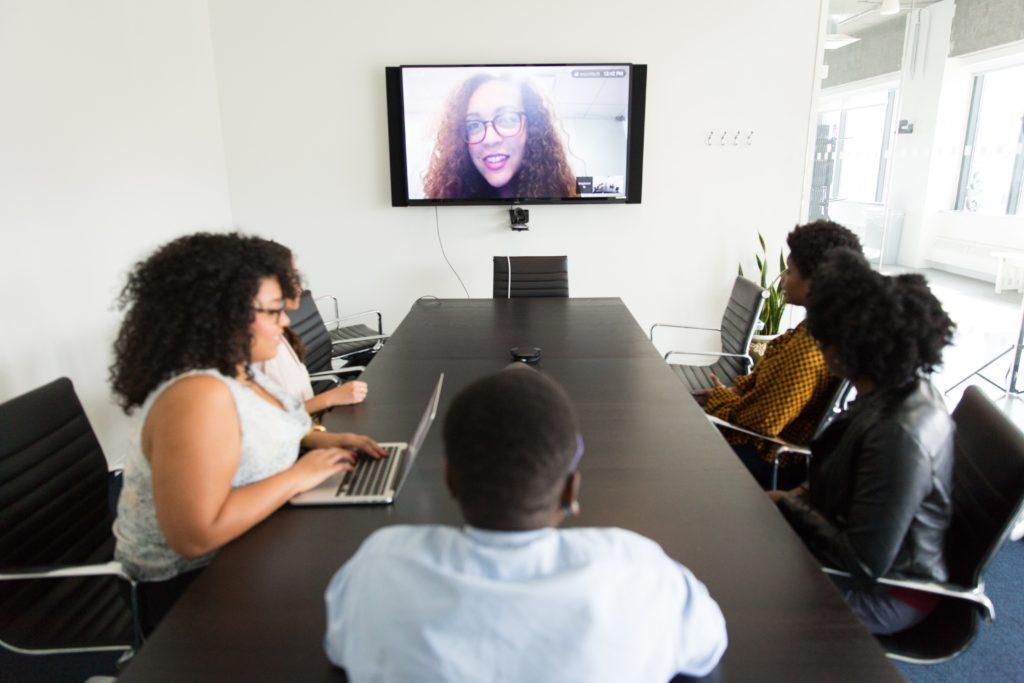How to make hybrid working work for your business and your employees
It’s no understatement to say that hybrid working has taken the world – or at least those who work in offices – by storm. Upon meeting up with contacts who have been confined to kitchen tables and spare rooms for the past 18 months, we invariably chat about how and when they’ll return to the office. And hybrid working is a topic that often comes up.

What is hybrid working?
Hybrid working, sometimes referred to as ‘blended working’, is a form of flexible working which allows employees to divide their working hours between the office (workplace) and a remote location (typically from home).
The theory behind hybrid working is that it encourages employees to be more agile while simultaneously improving work-life balance.
The roll-out of the COVID vaccine coupled with a relaxed approach to social distancing and quarantining means an opportunity for many employees to consider a return to work. Many employers are providing new working set-ups which include hybrid and flexible working.
Hybrid working – part of the great reset or a cause of stress?
There is no one size fits all. Every business is different and every person is unique.
Reactions to hybrid working differ by age groups. (You can read about the 5 generations of man and how they vary in this blog post.) Baby boomers are likely to react differently to hybrid work and have different views on flexibility to Generation Y and Z who are more dependent on socialising.
If one factor is clear however, it is that the further uncertainty brought about by a change in working practices is creating extra anxiety, tension and stress for employees. This can lead to depression for some employees, while for others it can manifest physically with lower immune systems or musculo-skeletal problems. Without doubt, the uncertainty affects employee productivity and business health.

The impact of hybrid work
The sudden onset of COVID-19 created change and uncertainty for both employers and their people. Some people were furloughed whilst others worked from home due to personal or family circumstances.
Key workers were obliged to remain at work in their workplace with every precaution taken to minimise the risks to that person of developing COVID-19.
Despite the challenges, the situation was black and white – everyone knew what was expected and how to behave.
The shift to a more relaxed approach however is creating its own challenges. There are companies who are overwhelmingly positive about hybrid working and those who dislike the concept.
I would suggest however, that it is best to be led by your employees. Consider the following examples:
- Some people may miss the companionship of the office and feel isolated and lonely. This can be especially the case for younger employees who relish the social aspect of working in a team.
- There are employees who value having no journey to and from work and have the opportunity to walk their dog or go for a run at lunchtime.
- Some employees may value greater control over their work when working from home.
- Others may feel guilty with the flexibility and work longer hours creating a poor work/life balance.
- There are employees who will struggle with the different videoconferencing apps and the need to use different software.
- What about the employees who do not have an ideal home set-up? If they live in a house-share or small flat, the monotony of working and living in a very small space can quickly become very disheartening.

One thing for sure is that Hybrid working has opened up the option of working differently than before the COVID pandemic. A McKinsey study found that around 30% of employees said they would switch jobs if asked to return to fully on-site work.
Lead with kindness
Research undertaken by the World Economic Forum stated that 75% of people want to have some flexibility over their working schedule. By listening and discussing individual’s needs and making it clear that flexibility is needed in the business, you may be able to agree a compromise. People appreciate the question “how are you feeling about working arrangements?”. It helps them feel that the organisation considers them as individuals.
It is important that managers are not only involved in sharing the corporate message but also have a one-to-one discussion with each team member. Everyone has different pressures at home. Some employees may for example have a dependent relative or a child with special needs. These factors must be taken into account and may require flexibility.
Taking this individual approach will help people relevant. And it is this approach which is in keeping with the Chartered Institute of Professional Development’s (CIPD) approach for business; “be people centred and show compassion and kindness at all times”.
Already one can see how the new ways of working, if effectively communicated, can lead to a change in culture. People will feel that the business is not just telling them but is listening to them and showing that they care. After all, we are all in this together!
Ten ways to make hybrid work a success for you and your employees
Hybrid work isn’t about giving into demands or siding with part of the workforce. It’s about finding a compromise for the health of the business and your people. The following pointers will help you implement a sustainable approach to hybrid working.
1. Audit the job roles in your company
What roles are suitable for hybrid or flexible working and what roles would continue remotely?
2. How many days can people working in the office based on space and team needs?
Does your workspace have enough desks and space for employees to work comfortably? Will employees be happy to be crammed into a small space after months of working in their own space? What about those employees who have residual anxieties about social contact due to covid?
3. How will team meetings work?
Any meeting which involves remote attendees has its challenges and hybrid meetings may result in uneven contributions from your team. Should you insist on everyone being present for a certain number of meetings per month or use virtual meetings as standard?

4. What technology do your hybrid and flexible workers need at home and at work?
Do they need a minimum standard of broadband connection? Will you provide them with connectivity devices to ensure their productivity? Will you insist on cloud-based data storage for security and ease of access?
5. How will you ensure compliance with GDPR rules?
It’s comparatively easy to manage when working from a central location, less so when working remotely. Training is a sensible step to take, as well as extra security steps for those working from home.
6. Do you need to review compensation arrangements for hybrid and flexible workers?
Some organisations have cut the pay of remote employees – what message does this send your employees? Do you want to use it as a carrot/stick to entice employees to the office or as a practical approach to ‘level playing the field’ and ensure pay equality? Or, will you leave salary alone and simply consider separate compensation arrangements related to travel or utilities costs?
7. Do you need to consider extra services to support your employees?
For example, would access to Occupational Health Services and Employee Assistant Programmes support the need for speedy and quality access for those struggling with the changes? Remember, change and uncertainty can trigger anxiety and depression in some employees. Other options could include practical wellbeing initiatives on various subjects based on what your people need.
8. Train your line managers
Not just in managing remote employees and a hybrid team, but also in supporting team members who may have mental health issues. Spotting these problems and quickly referring them to occupational health can help prevent them developing into an even bigger problem.
9. Talk to your employees and ask them for their input
It is only through collaboration that a business will get a true sense of what employees think about these topics. This can save money and time in the long run by finding options that might otherwise never have been considered.
10. Remember, this shift is not a quick fix
A business needs a constant dialogue with its people to review the impact of new programmes. It’s only by taking this ‘little by little’ approach that you will get the results you seek.
Remember that whatever you do with introducing your hybrid and flexible working set-ups, if the experience results in your people feeling valued you are likely to see the benefits. People will respond by feeling more engaged in their roles and more valued by the business. This in turn will increase their productivity, leading to a healthier, more productive and profitable business.
How is the change in working practices affecting your organisation?
If you’d like to talk about how I may be able to help you or others in your organisation, please get in touch. I’d love to hear from you.
